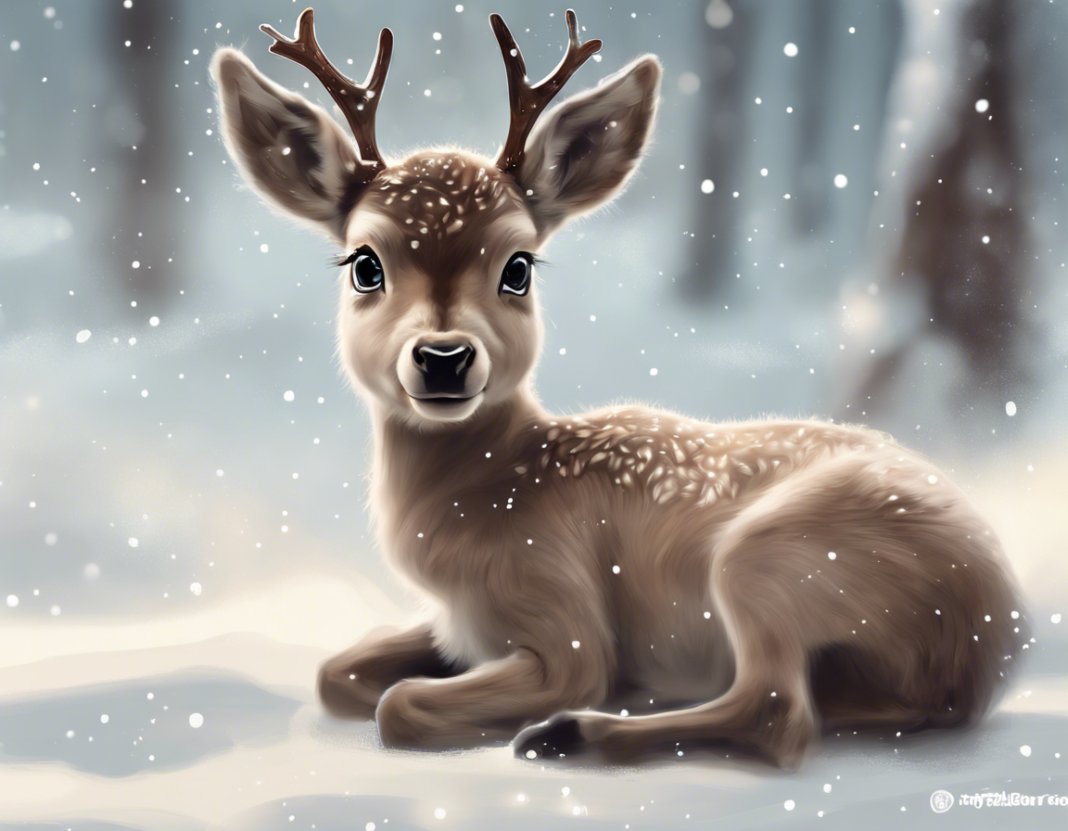Introduction
The winter season brings with it a sense of magic and wonder, and what better way to embrace this magic than by learning about one of the most iconic symbols of winter – the majestic reindeer. In this article, we will delve into the fascinating world of baby reindeer, with a special focus on a delightful little reindeer named Teri. From their unique characteristics to their habitat and behavior, we will explore everything you need to know about these adorable creatures.
The World of Reindeer
Reindeer, also known as caribou in North America, are members of the deer family and are well adapted to cold environments. These magnificent creatures are known for their impressive antlers, which are found on both males and females. The antlers play a crucial role in various activities such as defense, territorial battles, and mating displays.
Baby Reindeer – A Bundle of Cuteness
When it comes to baby reindeer, one cannot help but be captivated by their sheer cuteness. These young reindeer, known as calves, are born with a warm coat of fur that helps protect them from the harsh winter weather. As they grow, their coat thickens to provide further insulation against the cold.
Calves are incredibly playful and curious, often engaging in games of chase and exploration of their surroundings. They rely on their mothers for nourishment and protection, staying close by their side for the first few months of their lives.
Meet Teri – The Star of Winter
Teri is a special baby reindeer who has captured the hearts of many with her endearing personality and playful antics. Born in the heart of winter, Teri embodies the spirit of the season with her joyful frolicking in the snow and her innocent gaze that melts the coldest of hearts.
Whether she is bounding through the snow-covered fields or nuzzling against her mother for warmth, Teri exudes a sense of wonder and delight that is truly infectious. Her presence reminds us of the beauty and magic that can be found in the simplest of moments.
Reindeer Habitat and Behavior
Reindeer are well adapted to cold climates and are often found in northern regions such as Scandinavia, Russia, Canada, and Alaska. These hardy animals are known for their ability to survive in harsh conditions, thanks to their thick fur and hooves that act as natural snowshoes.
In the wild, reindeer are social animals that form herds to navigate the vast tundra landscapes in search of food. They feed on a diet of lichen, moss, grass, and shrubs that provide them with the energy needed to sustain their migration patterns and survive the long winter months.
Frequently Asked Questions (FAQs)
- What is the difference between reindeer and caribou?
-
The terms “reindeer” and “caribou” are often used interchangeably, but there is a slight distinction. Reindeer are domesticated animals kept for herding, while caribou are wild animals that roam the open ranges of North America.
-
How do reindeer adapt to cold environments?
-
Reindeer have thick fur coats that provide insulation against the cold, as well as hooves that are adapted for walking on snow. They also have a specialized nasal passage that warms the air before it reaches their lungs.
-
Do baby reindeer have antlers?
-
Baby reindeer, or calves, are born without antlers. Antlers typically start to grow on calves when they are a few months old, with males developing larger and more elaborate antlers than females.
-
What is the lifespan of a reindeer?
-
Reindeer have an average lifespan of around 15 years in the wild. Domesticated reindeer that are well cared for can live up to 20 years or more.
-
How do reindeer communicate with each other?
- Reindeer use a variety of vocalizations such as grunts, snorts, and bellows to communicate with each other. They also rely on body language, such as posture and ear positioning, to convey messages within the herd.
Conclusion
In conclusion, baby reindeer are truly a marvel of nature, embodying the spirit of winter with their adorable demeanor and resilient nature. Whether it’s the playful antics of a calf like Teri or the majestic presence of a fully grown reindeer, these creatures never fail to captivate our hearts and minds. As we embrace the wonders of winter, let us take a moment to appreciate the beauty of these magnificent animals and the role they play in the ecosystems they inhabit.




